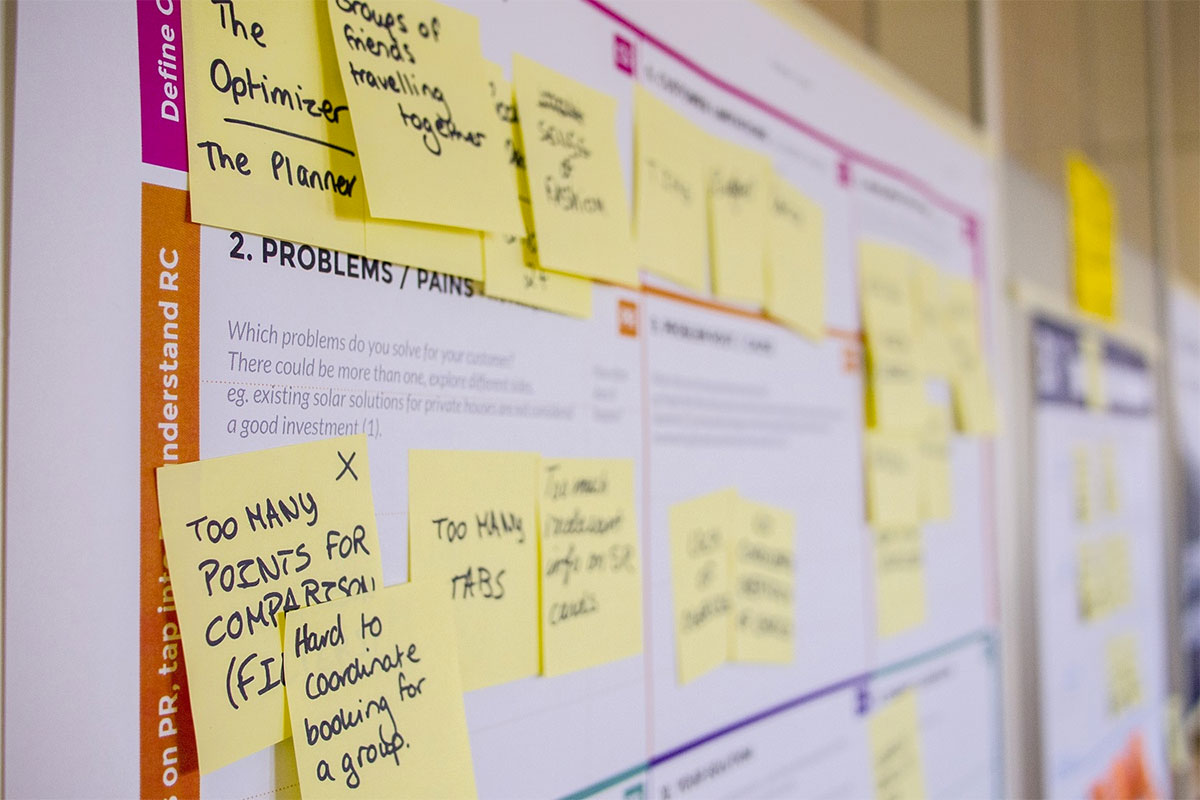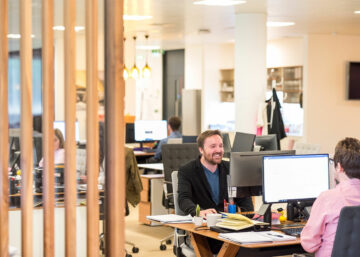Design Thinking began in order to eradicate an old paradigm of thinking when it comes to projects.
The premise of this methodology is to focus on people in order to propose solutions that satisfy customers at every stage of the process with immediate actions. Essentially, it is about putting oneself in the shoes of users and/or consumers in order to generate ideas from a place of empathy and the urgency to meet needs.
If there is anything on which this tool can deliver, it’s that it normally transfers the very attributes of design processes to any project that is applied. Thus it can facilitate innovation, creativity, simplicity, practicality, and can be what sets an idea apart.
How is it done?
First of all, we must establish the basis on which we are going to build the rest of our strategy. What is most important to keep in mind during this stage (and during the entire process) is that we always want to add value to people. No idea should be rejected if it is thought of from the customer’s perspective.
To find a common thread to support this approach and at the same time get ideas flowing, Design Thinking proposes five steps:
- Empathise
During this stage we seek to understand the customer more deeply, identify their motivations, habits, interests, likes, challenges and preferences. That way, we will be able to feel the need as our own and begin to operate from the perspective of the customer.
- Define
Once you have identified who the person is and what would be the most effective way to satisfy their need or resolve their problem, you can determine what your objective will be.
- Ideate
After coming up with a solid base comes the stage in the process in which freedom is very important. This is when we bring the greatest possible number of ideas to the table and begin to build the framework for our idea. A good practice is to build on others’ ideas, without rejecting any possibilities, and avoiding pessimism.
- Prototype
Finally the moment has arrived: with all the ideas on the table, the time has come to converge them into a sample (tangible if possible) of what you are attempting to achieve.
- Test
Like any good process, there must be a final stage to test results. During this stage we must ask ourselves, is the customer satisfied with our sample? Are we on the right path toward the expected result?
Any practice that aims to optimise processes and get the best from each person entails major benefits for the organisation. If you are looking to begin a project on the right foot, using Design Thinking can be quite helpful. Give design thinking a go!




